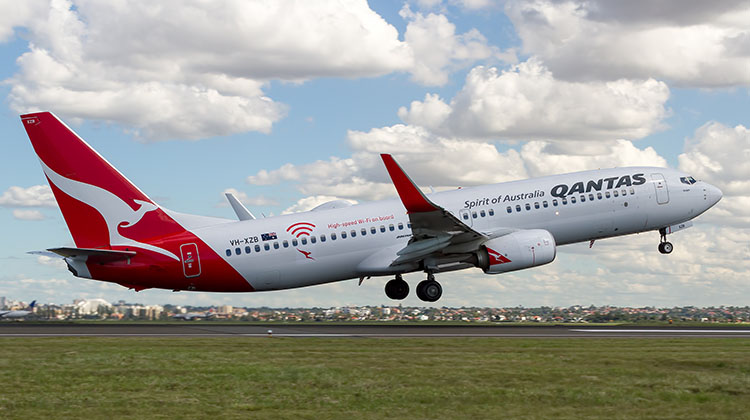
Qantas says it expects to have up to 10 aircraft equipped with onboard internet wi-fi by September.
The airline says it has installed wi-fi equipment on a second Boeing 737-800, VH-XZC, as it progresses with the rollout of the technology that made its debut in April on VH-XZB.
Qantas said VH-XZC and subsequent aircraft to be fitted with internet wi-fi equipment during the trial phase will be used only for testing purposes and not be available for passengers on board until at least September.
“A second B737 (VH-XZC) has now been fitted with the latest ViaSat equipment,” Qantas said in a wi-fi update on its website.
“Up to eight more will be fitted out between now and late September, when we expect to move from the trial phase to a broader rollout.
“The wi-fi on these aircraft won’t be switched on for customers before then, because we’re rolling out the latest technology and it must undergo testing.”
Qantas switched on its inflight internet wi-fi service to the travelling public on April 7, conducting a demonstration flight on board Boeing 737-800 VH-XZB for media, representatives from providers ViaSat and nbn co, airline staff and invited guests.
Connectivity is provided by ViaSat’s global satellite network and nbn’s Sky Muster satellites, which use the high capacity Ka-band. The service will be free for all passengers, with those on board offered complimentary subscriptions to the likes of Foxtel, Stan, Netflix and Spotify for a certain number of days.
Qantas said on Tuesday about a third of all passengers on board flights operated by VH-XZB had logged on to the onboard internet wi-fi service, noting the figure was a lot higher than the five per cent of passengers who used paid onboard internet in 2012 when it was briefly offered on the airline’s A380 services.
“Fine tuning has seen reliability improve to above 98 per cent, meaning we’re seeing fewer dropouts as the aircraft flies at 850km/h across different satellite beams,” Qantas said.
“Download speeds now are routinely above 12 megabits per second, which has edged higher as the trial continues.”
The most common use of onboard internet wi-fi has been for email and web browsing, particularly news sites, Qantas said.
“This is followed by social media (Facebook is the most popular social media application), streaming video and music services (Stan, Netflix, Spotify), along with messaging services (like WhatsApp) and on-line shopping,” Qantas said.
Qantas plans to roll out the technology on its fleet of domestic 737-800s and Airbus A330s, with about 80 aircraft to be fitted with a satellite antenna, multiple wireless access points in the cabin and other hardware by the end of 2018.
Meanwhile, Virgin Australia commenced its own three-month trial of inflight wireless internet aboard one of its Boeing 737s, VH-YIG, on April 20.
Virgin Australia is using Ku-band Optus satellites for its wi-fi service via inflight internet provider Gogo’s “2Ku” dual-antenna technology (one for the forward link and one for the return link) which delivers simultaneous transmissions and faster connectivity compared to standard Ku-band connections.
(Australian Aviation profiled the rollout of Qantas and Virgin’s internet offerings in the May 2017 edition of the magazine.)










